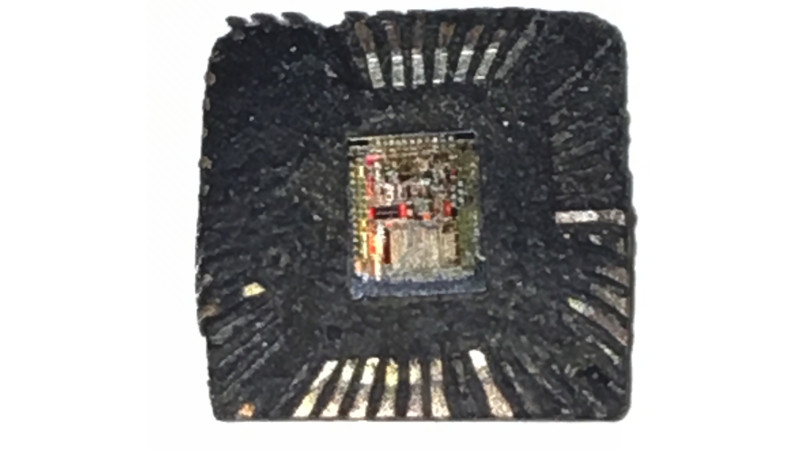There can be few of us who haven’t gazed with fascination upon the work of IC decappers, whether they are showing us classic devices from the early years of mass semiconductor manufacture, or reverse-engineering the latest and greatest. But so often their work appears to require some hardcore scientific equipment or particularly dangerous chemicals. We’ve never thought we might be able to join the fun. [Generic Human] is out to change all that, by decapping chips using commonly available chemicals and easy to apply techniques. In particular, we discover through their work that rosin — the same rosin whose smell you will be familiar with from soldering flux — can be used to dissolve IC packaging.
Of course, ICs that dissolved easily in the face of soldering wouldn’t meet commercial success, so an experiment with flux meets little success. Pure rosin, however, appears to be an effective decapping agent. [Generic Human] shows us a motherboard voltage regulator boiled in the stuff. When the rosin is removed with acetone, there among the debris is the silicon die, reminding us just how tiny these things are. We’re sure you’ll all be anxious to try it for yourselves, now, so take a while to look at the video below showing their CCC Congress talk.
The master of chip decapping is of course [Ken Shirriff], whose work we’ve featured many times. Our editor [Mike Szczys] interviewed him last year, and it’s well worth a look.
















One time I had a Samsung HCS-12SS59T VFD Display which nobody could bring to life. “decapped” it by smashing it and took a look on the internal controller. Turned out the Datasheet was wrong about polarity…
I use a mapp gas torch.
Ouch.
ICS?
Integrated Circuits.
Plural of IC (integrated circuit.) Hackaday forces the title to all uppercase letters but paragraph two reads “Of course, ICs[…]” with the lower-case s.
Interesting. Not that surprising as the same qualities that make rosin a good flux will also help for this application.
How does this compare to fuming nitric acid or sulphuric acid?
Concentrated sulfuric acid and especially fuming nitric acid are more difficult (and expensive) to get a hold of. That’s the point of this project. Incidentally rosin is also much less dangerous.
I understand that, I meant more on how the result differs. I looked at the linked video and found the answer, the Rosin method removes the bonding wires (which isn’t needed if you just want to expect the die), while then fuming nitric acid does not.
I’ll definitely try the Rosin method in the future.
Where do you buy the blocks of Rosin like that?
I’m wondering if I could also just use tree sap from a pine tree
“I’m wondering if I could also just use tree sap from a pine tree”
GIYF, B^)
https://www.instructables.com/id/Rosin/
“Well, let me have just a little bit of peril?”
Useful!